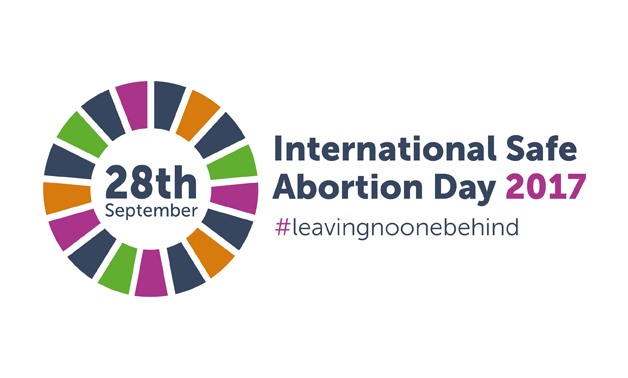
Photo Via www.safeabortionwomensright.org
CAIRO – 28 September 2017: September 28th marks the sixth International day for Safe Abortion after it was declared by the Women's Global Network for Reproductive Rights (WGNRR).
Yet it was originally a day that celebrates the abolition of slavery for children born to slave mothers in Brazil, was renamed as the day of the ‘free womb’ and the movement spread to all the other regions in the world.
In 2015 the name of the awareness day came to be when 83 activities were organized in 47 countries by national, regional and international NGOs and activists. 2016 was the biggest International Safe Abortion Day to be celebrated.
According to the World Health Organization:
Between 2010–2014:
o On average, 56 million induced (safe and unsafe) abortions occurred worldwide each year
o There were 35 induced abortions per 1000 women aged between 15–44 years
o 25 percent of all pregnancies ended in an induced abortion
o The rate of abortions was higher in developing regions than in developed regions.
Around 25 million unsafe abortions were estimated to have taken place worldwide each year, almost all in developing countries (1).
o Among these, 8 million were carried out in the least- safe or dangerous conditions
o Over half of all estimated unsafe abortions globally were in Asia
o 3 out of 4 abortions that occurred in Africa and Latin America were unsafe
o The risk of dying from an unsafe abortion was the highest in Africa
• Each year between 4.7 percent – 13.2 percent of maternal deaths can be attributed to unsafe abortion (2).
• Around 7 million women are admitted to hospitals every year in developing countries, as a result of unsafe abortion (3).
• The annual cost of treating major complications from unsafe abortion is estimated at $553 million (4).
• Safe abortion must be provided or supported by a trained person using WHO recommended methods appropriate for the pregnancy duration.
• Almost every abortion death and disability could be prevented through sexuality education, use of effective contraception, provision of safe, legal induced abortion, and timely care for complications.
Here in Egypt it is still illegal to have an abortion and the punishment for it is imprisonment. Abortion is only allowed in Egypt if the women’s health is in jeopardy.
Women tend to opt for home abortion techniques such as taking medication that is not available in pharmacies, where the side-effect maybe excessive bleeding in which case it is very unsafe to seek medical help in the case of being arrested.
Women in ruler areas have been known to result tojumping up and down repeatedly, punching themselves in the stomach, insert sharp objects in their uterus such as hangers.
The most common reasons that drive women to seek abortion are the firstly due to health reason if one is too ill, has cancer or their body just cannot take on nine months of carrying a life inside of it. Rape or incest are also very common due to the amount of daily sexual harassment and assault women deal with on a daily bases weather ate home or out in public.
The other maybe the one that most would disagree or look down on is the fact that some women just do not want to have kids they do not want to put anyone else through the world that they are living and would rather not to add on to the world’s ever growing never stopping population.
Comments
Leave a Comment